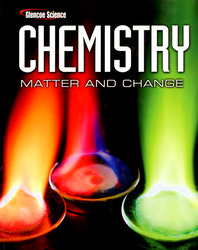1 A) the reaction is spontaneous B) the reaction is not spontaneous C) the reaction is at equilibrium D) the reaction has no energy 2 eq is greater than zero, then at equilibrium ________.A) the amount of product is greater than the amount of reactant. B) the amount of reactant is greater than the amount of product. C) the amount of reactant and product are equal D) the amount of product is zero. 3 <a onClick="window.open('/olcweb/cgi/pluginpop.cgi?it=jpg::::/sites/dl/free/007874637x/514713/fig17_3.jpg','popWin', 'width=NaN,height=NaN,resizable,scrollbars');" href="#"><img valign="absmiddle" height="16" width="16" border="0" src="/olcweb/styles/shared/linkicons/image.gif"> (49.0K)</a> A) The forward reaction happens faster than the reverse reaction. B) The forward reaction happens slower than the reverse reaction. C) The forward reaction and the reverse reaction happen at the same rate. D) The forward reaction has stopped. 4 2 (g) + O2 (g) → 2SO3 (g) + heat, at equilibrium, what will be the effect on the net amount of SO3 present if the temperature of the container is increased?A) The concentration of SO3 increases. B) The concentration of SO3 decreases. C) The concentration of SO3 remains the same. D) This question cannot be answered without knowing the value of Keq. 5 2 (g) + Cl2 (g) → 2HCl(g) + heat, what will be the effect on the equilibrium constant, Keq , if the pressure of the vessel is decreased at constant temperature?A) Keq increases B) Keq decreases C) Keq does not change D) The question cannot be answered without knowing the initial value of KKeq . 6 2 (g) + 2H2 O(g) + heat → 4HCl(g) + O2 (g), which of the following will shift the equilibrium to produce more HCl?A) add more Cl2 B) lower the temperature of the reaction C) decrease the volume of the reaction vessel D) add more O2 7 sp for SrSO4 is 2.8 x 10-7 . What is the molar solubility of SrSO4 ?A) 7.6 x 10-7 M B) 5.8 x 10-13 M C) 5.3 x 10-4 M D) 5.7 x 10-3 M 8 2 ] = 0.900 M, and [H2 O] = 0.400 M. The Keq for the reaction is 3.933.2 (g) yields CH4 (g) +H2 O(g)A) 3.58 M B) 44.2 M C) 4.32 M D) 3.98 M 9 sp at 298 K, then calculate the molar solubility of AgCl.<a onClick="window.open('/olcweb/cgi/pluginpop.cgi?it=jpg::::/sites/dl/free/007874637x/514713/tab17_3.jpg','popWin', 'width=NaN,height=NaN,resizable,scrollbars');" href="#"><img valign="absmiddle" height="16" width="16" border="0" src="/olcweb/styles/shared/linkicons/image.gif"> (48.0K)</a> A) 4.2 x 10-5 M B) 3.9 x 10-5 M C) 2.6 x 10-5 M D) 1.3 x 10-5 M 10 3 . Will a precipitate form?Ksp for AgCl is 1.8 x 10-10 .+ (aq) + Cl- (aq)A) 0.01, a precipitate will form B) 0.0025, a precipitate will form C) 0.01, a precipitate will not form D) 0.0025, a precipitate will not form.





